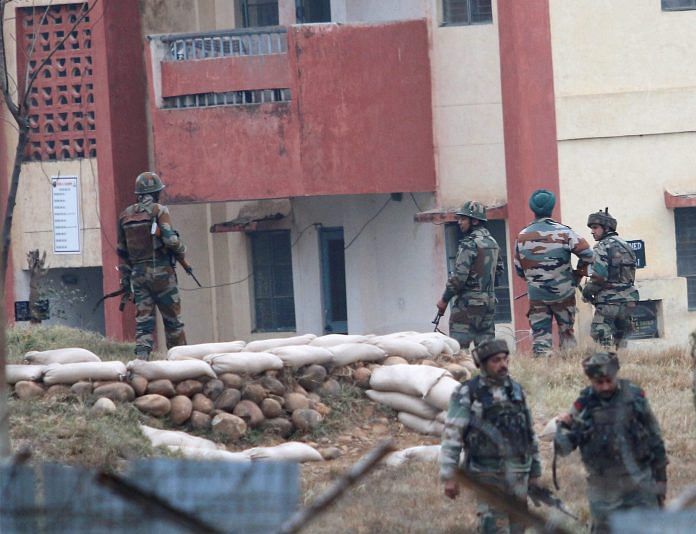J&K Police suggests the militants were from Pakistan, and that the attack was planned much in advance. Lashkar claims responsibility, probe handed over to NIA.
New Delhi: Before they struck at the civilian quarters of the 1 Jammu and Kashmir Light Infantry (JAKLI) unit inside Sunjuwan Military Station on the outskirts of Jammu, the heavily-armed Pakistani militants had conducted a thorough recce of the area.
An initial investigation conducted by the J&K Police also suspects the militants may have received support from “locals”, especially since they had adequate knowledge of the area.
“Bodies of the three militants recovered from the site show that they belong to Pakistan. They definitely had some support from locals. How else would a foreigner know about the presence of an Army camp there, as well as the entry point from where to get into the camp?” Jammu and Kashmir Director General of Police (DGP) Shesh Paul Vaid told ThePrint.
While the police said the militants belonged to the Jaish-e-Mohammad, the Lashkar-e-Taiba claimed responsibility for the attack Monday. In a statement to local news agencies in Kashmir, the Pakistani terror group claimed that both Sunjuwan and another attack in Srinagar was carried out by it. A constable was killed in a gunfight that broke out in Srinagar early Monday after the Central Reserve Police Force (CRPF) foiled an attack on its camp in the city’s Karan Nagar area.
While a final conclusion on the Sunjuwan attack will emerge only after further investigation, the preliminary probe states that the militants could’ve been part of a large group of around 40 Pakistan-trained militants, who crossed over from the Line of Control (LoC) sometime back.
“We need to find out how the militants managed to travel all the way from Kashmir to Jammu along with the weapons, unless the weapons had been sent earlier,” a source close to the probe said.
How the attack was executed
Investigators say the militants entered the camp after creating a breach by cutting the barbed wire fence on the rear side of the camp.
“The front side was better protected, mainly due to the 15-feet-high boundary wall. The wall had been raised after the 2003 attack on the camp. But, the only protection that the rear side had was barbed wire, which could easily be cut,” said an investigating officer.
Investigators have also recovered wrappers of chocolates and biscuits, syringes and remnants of injectible drugs in a dilapidated building near the camp. This, sources say, points to the fact that the militants or their local guides spent a “considerable amount of time” in the vacant house from where they kept an eye on the camp to observe the movement of the soldiers and also check the security arrangements.
“Before they executed the attack, the militants and their guides seem to have operated in complete co-ordination. They had planned well in advance,” an officer said.
“But, now that the investigation has been handed over to the National Investigation Agency (NIA), it will be for it to find the local collaborators of the militants.”




Worthy of a “duh”.